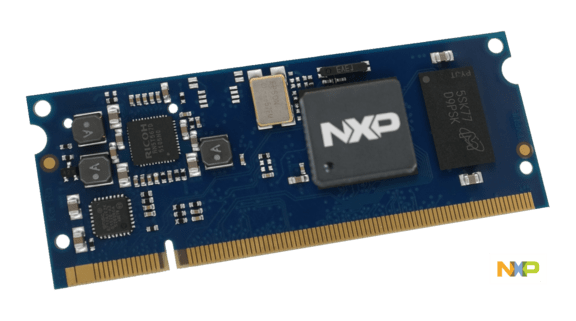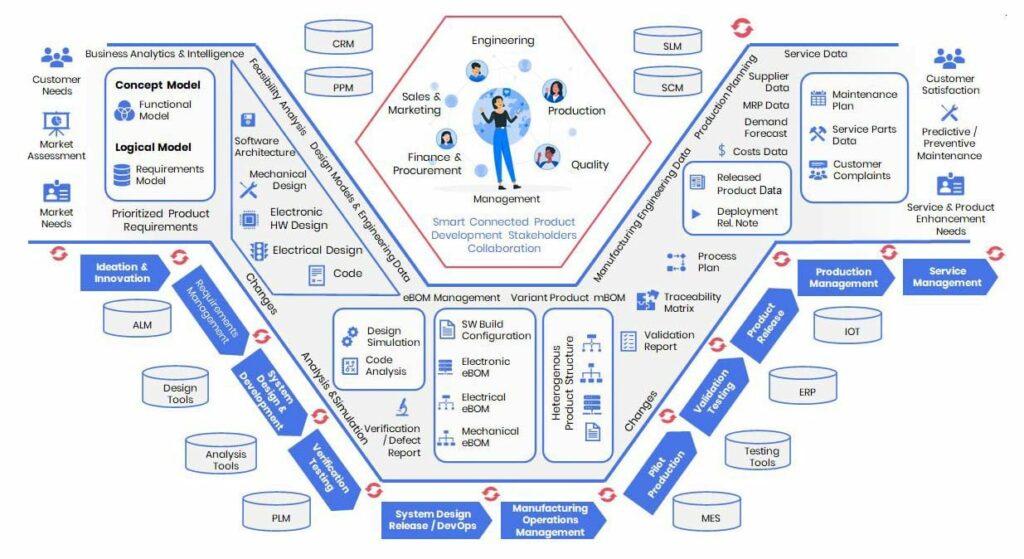The automotive industry is undergoing a rapid technological change driven by stringent emission regulations and customer expectations regarding performance, comfort and advanced infotainment integration. Until a few years ago, software was part of a car. Tomorrow, software will be what is driving the car. 95% of the software is invisible to the driver, but 100% determines safety and acceptance by its buyer and sustainability for its manufacturer.
“We provide embedded development solutions for automotive that ensure software under the hood meets compliance to automotive standards , reliability and security and tools to develop sublime driver experiences”
Accelerate development
We bring designers and developers together to design rich, intuitive digital instrument clusters, driver information displays and in-vehicle infotainment systems for sublime driver experiences.
Increase Reliability
The demands on a vehicle’s flash-based storage are increasing rapidly as the connected car must reliably handle, store and process data from a variety of sources. Systems are expected to be instantaneously ON even after an accidental shutdown.
Strengthen Security
As the complexity of vehicle functions is growing, the requirements for security of information in the vehicle are gaining importance. Secure engineering not only creates awareness, with the proper tools to document requirements and checkpoints, it lifts security to a higher level.
Ensure Compliance
We help developers of security and safety-critical automotive systems to meet IEC 61508, ISO 26262, ISO/SAE 2143, ASPICE and SAE J3061 standards from requirements through deployment, eliminating or reducing labor-intensive and error-prone elements.
Automotive solutions

GUI design
Traditionally, the automotive industry has had a slow software cycle when it comes to in-car infotainment. Software released for a certain model would remain untouched for years. This has changed with the rise of EV’s and in-car infotainment systems more resembling to smartphones then traditional radio software. Jump to GUI design
File Systems
Our data management software ensures data reliability and high performance for all data-critical systems using automotive flash memory, such as ADAS, DVR, EDR, Telematics, Instrument Cluster and infotainment.
Our customer chose Tuxera’s Reliance Edge file system because it ensures consistently fast boot times, data reliability and a small footprint. Jump to file systems
Databases
From vehicles and buildings, to factory floors to power plugs, everything around us is increasingly controlled by sensors. The number of data collection points and edge devices is huge and is growing fast. In the recent past, we dealt with dozens of connected devices: factory floor controllers, face recognition or fingerprint scanners, TV transponders, etc. In today’s applications, the amount of connected devices is often in the thousands when considering how many intelligent data collection points (“intelligent connected devices”) are at play. Jump to databases
Compliance and security
Software teams who design and develop software for the automotive industry should use ASPICE to document processes and measure the maturity of the organization’s processes Using traditional manual methods is time-consuming, costly and error-prone. With the increasing complexity of today’s automotive software systems, the time it takes for manual methods to successfully complete the job increases exponentially. Our embedded development solutions for automotive help demonstrate compliance and add rigor and automation to your development process. Jump to Compliance and Security
PLC Management
ALM for ISO 26262 & ASPICE compliance
With changing and evolving sophisticated nature of automotive systems, addressing the requirements for functional safety, hazards and security standards has become the primary focus for automotive designs
SAE 3016 and SAE 3018 ASPICE® and ISO 26262 are key standards to be used.
Project managers try to prepare a Risk Management Plan for ALM by efficiently elaborating the requirements and then execute them. This is to ensure that most of the risks are predicted and controllable, measures could be taken to prevent project failure. Jump to PLC Management
Removing the boundaries between front-end and back-end GUI design
“How can we develop a GUI that looks great and keeps performing well during the entire PLC?”
Traditionally, the automotive industry has had a slow software cycle when it comes to in-car infotainment. Software released for a certain model would remain untouched for years. This has changed with the rise of EV’s and in-car infotainment systems more resembling to smartphones then traditional radio software.
To keep up with rapidly evolving consumer demands, Tier 1 and OEM manufacturers recognize the need to deliver innovative digital instrument clusters, driver information displays, and in-vehicle infotainment systems. Of all automotive GUI and HMI tools, Storyboard is the only platform that brings designers and developers together, treating them as equals to design rich, intuitive in-vehicle experiences without sacrificing resources or performance.
User Interface design
Computer module solutions aimed for flexibility, scalability and longevity
“Which hardware do we need for designing embedded automotive systems?”
Tier 1 and OEM suppliers produce hardware for a variety of different models and with this comes the need for flexibility and scalability. With a range of solutions starting from low power MCU to High end MPU products we can offer a seamless, scalable platform, that is capable of dealing with every challenge you face.
Within the automotive industry longevity is a key feature. When developing complex electronics that need to go through extended testing and compliance certification processes, you want to make sure that the hardware is suited for the long run. Longevity is one of our key focus points when selecting components. All of our selected boards have an availability of at least 10 years from release.
Innovation is another key part of the automotive industry. We want to help you be as innovative as possible by eliminating the need to develop custom hardware for your proof of concepts. And with that lower the overall development costs and risks involved. With our proven and tested development kits, you can use of-the-shelve products to test your ideas in real world situations.
Boards & Solutions for automotive systems
How Logic Technology helped customers: File Systems in Automotive

Fast and secure database solutions for automotive IoT
From vehicles and buildings, to factory floors to power plugs, everything around us is increasingly controlled by sensors. The number of data collection points and edge devices is huge and is growing fast. In the recent past, we dealt with dozens of connected devices: factory floor controllers, face recognition or fingerprint scanners, TV transponders, etc. In today’s applications, the amount of connected devices is often in the thousands when considering how many intelligent data collection points (“intelligent connected devices”) are at play.
Therefore, as automotive embedded applications for communication, engine and transmission control, infotainment, safety, comfort and other purposes become more intelligent, they need a strong, reliable and responsive real-time software foundation.
“What are some of today’s most advanced technical enhancements for Automotive IoT?”
Our hybrid in-memory and persistent database management system, eXtremeDB, brings a range of technical enhancements for Automotive IoT:
To keep up with rapidly evolving consumer demands, Tier 1 and OEM manufacturers recognize the need to deliver innovative digital instrument clusters, driver information displays, and in-vehicle infotainment systems

- Low-level network compression: Operating with low-bandwidth networks, which is often the case with IoT, requires network traffic to be compressed. eXtremeDB implements compression at the SAL (System Abstraction Layer), meaning that compression can be applied to any supported socket type (plain TCP, SSL, local-domain, UDP and others).
- Low-overhead tracing: Sometimes, concurrent tasks manipulating a common resource (a database, in this case) can have unintended consequences that are difficult to diagnose. Developers may need to know not only the current application state but also some history of operations. The tracing framework provides this possibility by allowing developers to view trace messages originating from inside eXtremeDB modules.
- Security: We see an increase in high-performance servers for vehicles into volume production with the in-car application server. This is a high-performance computer that will take over the central functions of millions of electric cars in the future, putting an end to the tangled clutter of electronics seen in today’s vehicles. In order to secure communications and channel authentication, the integrity of data must be provided by the database management system, an important component of which is data encryption. Data encryption on the edge node is, in a way, more important than server-side encryption. Backend database servers normally have available a full network security apparatus, run behind sophisticated firewalls. There, security and authentication are overseen by security personnel, etc. In contrast, edge nodes’ storage containers are “out in the open”, often running unattended; more often than not they have very limited resources and don’t have well-established firewall-like security mechanisms. However, tampering with nodes’ data containers has already proven to be harmful (in recent years we have seen cases of spoofing the identity of insecure network nodes). In the end, you don’t really care why the lights went off, or why your in-car GPS led you to a lake. You are wet, regardless of whether it was the GPS transmitter providing incorrect data, or your car’s receiver was hacked.
Database solutions for automotive IoT
Develop safer and more secure software systems
“What is the best way forward to implement functional safety and cybersecurity standards?”
Software teams who design and develop software for the automotive industry should use ASPICE to document processes and measure the maturity of the organization’s processes Using traditional manual methods is time-consuming, costly and error-prone. With the increasing complexity of today’s automotive software systems, the time it takes for manual methods to successfully complete the job increases exponentially. Our embedded development solutions for automotive help demonstrate compliance and add rigor and automation to your development process.
We help developers to quickly understand the requirements of the ISO 26262-6:2018 standard depending on the Automotive Safety Integrity Level (ASIL) required for their application to help ensure safe and secure automotive application development and deployment.
Main benefits of our compliance tools
Save time, money and avoid stress through:
- Requirements traceability
- Coding standards compliance
- Structural coverage analysis
- Object code verification
- Unit, Integration & System testing
- Tool qualification
Coding standards solutions for automotive systems

Integrate your existing homegrown tools with third-party and open-source solutions to ensure end to end coverage
“What is the best way forward to configure the entire product lifecycle and include all stakeholders?”
Software delivery with agility has not only increased the complexity of projects but at the same time increased the risks of failures for organizations across industries, no matter their product or service. Too often there is a lack of goal-alignment between business objectives within IT departments, such as the pursuit of higher productivity in software delivery with increased needs for newer features, functions and services, higher quality, while at lower costs. This leads to well-intentioned initiatives that ultimately fall short of their goals.
With correct alignment of goals using Value Stream Management (VSM), and corresponding tools/platforms, organizations which are successfully aligning software development and delivery with their business objectives can efficiently scale their Agile and DevOps transformations more effectively. We provide a ‘synchronized tools’ environment for organizations to facilitate collaboration, manage, and track the progress of a release across all phases of the Application Lifecycle Management.

- Pre-Configures Automotive ALM Solution compliant to ASPICE and ISO 26262
- Centralized Web based platform for stakeholders to collaborate, manage, and track the progress of a release across all phases of Application Lifecycle Management – ALM & PPM
- Enabling organizations to setup an integrated environment for development without replacing the existing tools.
- An enterprise solution simplifying and automating execution and monitoring real time metrics.
This is achieved with seamless integration of the best of the breed tools in development, build, test and deployment cycles to enable a one click execution.

